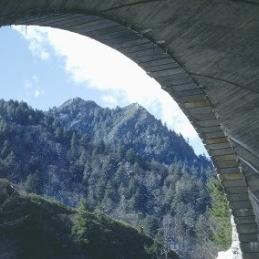Browse
Export 110 results:
Filters: Keyword is Fungi [Clear All Filters]
"Conservation Status of a Threatened Tree Species: Establishing a Baseline for Restoration of Juglans cinerea L. in the Southern Appalachian Mountains, USA." Natural Areas Journal 33, no. 4 (2013): 413-426.
Recruitment History, Current Health and Conservation Genetics of Butternut (Juglans cinerea) Populations in Great Smoky Mountains National Park. Department of Forestry and Natural Resources, Purdue University, 2011.
Checklist of Fungi of the Great Smoky Mountains National Park In Management Report. Gatlinburg, TN: Uplands Field Reserach Laboratory, 1979.
"Mating Systems in Hymenomycetes: New Reports and New Species." Mycologia 86, no. 6 (1994): 743-757.
Comments on the Fungi of the Spruce-Fir Forest of the Southern Appalachian Mountains In The Southern Appalachian Spruce-Fir Ecosystem: Its Biology and Threats. Gatlinburg, TN: Uplands Field Research Laboratory, 1984.
"Three New Species of Acanthostigma (Tubeufiaceae, Dothideomycetes) from Great Smoky Mountains National Park." Mycologia 102, no. 3 (2010): 574-587.
"Hyphomycetes from the Great Smoky Mountains National Park, Including Three New Species." Fungal Diversity 26, no. 1 (2007): 271-286.
"Freshwater Ascomycetes: Cyanoannulus Petersenii, a New Genus and Species from Submerged Wood." Mycotaxon 88 (2003): 1-17.
"Pyrenomycetes of the Great Smoky Mountains National Park. VI. Kretzschmaria, Nemania, Rosellinia and Xylaria (Xylariaceae)." Fungal Diversity 29, no. 9 (2008): 107-116.
"Molecular Characterization and Detection of a Tripartite Cryptic Virus from Rose." Journal of Plant Pathology 90, no. 2 (2008): 287-293.
Micropaleontologic Studies of Cherts from the Jonesboro Limeston, Cades Cove In Investigator's Annual Report. Los Angeles, California: University of Los Angeles, 1975.
"New and Interesting Calicioid Lichens and Fungi from Eastern North America." The Bryologist 113, no. 2 (2010): 272-276.
The Calicioid Lichens and Fungi of Great Smoky Mountains N.P.. Fort Kent, Maine: University of Maine , 2009.
Calicioid Lichens and Fungi of Great Smoky Mountains National Park. Discover Life in America, 2009.
"New and Unusual Dark-Spored Agarics from North America." The Journal of the Elisha Mitchell Scientific Society 62, no. 2 (1946): 177-200.
"New and Interesting Agarics from Tennessee and North Carolina." Lloydia 6 (1943): 248-266.
"New and Unusual Agarics from the Great Smoky Mountains National Park." The Journal of the Elisha Mitchell Scientific Society 56, no. 2 (1940): 302-324.
"Studies Lactarius-III: The North American Species of Section Plinthogali." Brittonia 14, no. 4 (1962): 369-440.
"New Species of Boleti from Cades Cove in the Great Smokies." The Journal of the Elisha Mitchell Scientific Society 56, no. 2 (1940): 325-328.
"Notes on Boletes. VIII." Mycologia 43, no. 3 (1951): 359-364.
"Myxomycetes of the Great Smoky Mountains National Park." Mycotaxon 78 (2001): 1-15.
"Through the Year in the Great Smoky Mounatins National Park, Month by Month." In The Great Smokies and the Blue Ridge: The Story of the Southern Appalachians, edited by Roderick Peattie, 263-289. New York: The Vanguard Press, 1943.
"The Distribution of the Fungus, Basidiobolus Ranarum Eidam, in Fish, Amphibians, and Reptiles of the Southern Appalachian Region." Transactions of the Kansas Academy of Science 80, no. 1-2 (1977): 75-77.
"A Model to Predict the Occurence of Surviving Butternut Trees in the Southern Appalachian Region." In Prediciting Species Occurrences Issues of Accuracy and Scale, edited by Michael J. Scott, Patricia J. Heglund, Michael L. Morrison, Jonathan B. Haufler, Martin G. Raphael, William A. Wall and Fred B. Samson, 491-497. Washington, D.C.: Island Press, 2002.
"Pyrenomycetes of the Great Smoky Mountains National Park. III. Cryptosphaeria, Eutypa and Eutypella (Diatrypaceae)." Fungal Diversity 22 (2006): 243-254.
















































